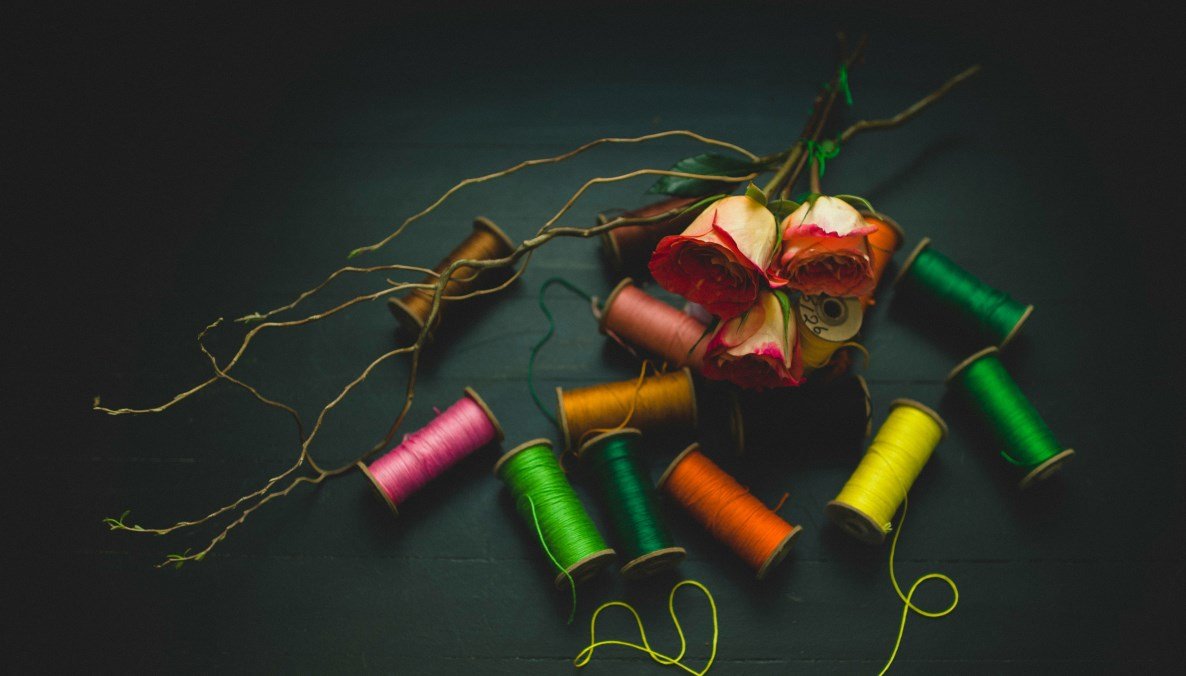
Age-old Aari and Zari Embroidery in Its Modern Avatar at Tvareetaz Creations
Apart from its valleys, mountains, and breathtaking meadows, Kashmir is also known for its heritage of weaving art into garments. From depicting motifs of nature to expressing human emotions, the artisans of Kashmir have perfected the art of telling stories through their stitchwork. Aari and Zari embroidery are among the most well-known methods Kashmiri artisans use to weave intricate patterns and elaborate designs on clothing and turn a dull piece of cloth into a work of art that has been preserved by Kashmiri brands.
Aari and Zari embroidery are staples in traditional Kashmiri fashion, yet many mainstream fashion enthusiasts are unaware of their potential. We believe it’s time to extend these masterful techniques into everyday fashion that more people can wear and relate to. This vision inspired us to reinvent traditional Aari and Zari in their modern avatar at Tvareetaz Creations.
The Basics of Aari and Zari Embroidery
The Aari embroidery pattern has its roots in Barabanki, Uttar Pradesh, and in Kutch and other places in Gujarat. It gained recognition through the Mochi or cobbler community and the royalty of Gujarat quickly developed a liking for the art. With time, the techniques and motifs of Aari embroidery travelled to Kashmir and other parts of the subcontinent under the patronage of Mughal kings, making it a symbol of heritage.
Aari embroidery is a detailed process that begins with freehand drawing of designs on fabric. Then the fabric is secured on a Khatla (tambour) for ease of handling. Artisans use a hook needle, or Aar, to stitch the design. Holding the thread at the back of the fabric and the needle in the other hand, the needle is inserted, twisted, and brought back up through the fabric. The process is then repeated to create intricate embroidery.
Zari, or jari, is a fine thread originally made from gold or silver and used in traditional Indian clothing. It is woven into fabrics–mostly silk–to create intricate and ornate designs known as zardozi. The popularity of Zari embroidery increased during the Mughal era and the port of Surat had a major role in its resurgence since it was a key stop on the Meccan pilgrimage route.
The zari embroidery process starts with tracing a design on paper and transferring it onto fabric using a pouncing pad with a chalk solution. Then the fabric is stretched on a wooden frame for even tension. Craftsmen use different needles and threads to create intricate patterns, borders, and designs. This detailed and complicated method is time-consuming and sometimes takes months for complex designs.
Similarities and Differences
Here’s a table that neatly highlights the similarities, differences, and overlaps between Aari and Zari embroidery:
|
Aspect |
Aari Embroidery |
Zari Embroidery |
|
Definition |
A hand-embroidery technique using a hooked needle. |
Embroidery using fine gold or silver threads. |
|
Thread Used |
Regular thread (often cotton or silk). |
Gold or silver thread (often referred to as jari). |
|
Design Technique |
Freehand design, usually on fabric stretched on a frame. |
Threads are used to create intricate patterns. |
|
Common Patterns |
Floral, geometric, and intricate designs. |
Elaborate, often used in zardozi embroidery. |
|
Application |
Used for decorative stitching on garments. |
Typically used to enhance textiles, including garments and accessories. |
|
Fabric Type |
Usually on fabrics like silk, cotton, and wool. |
Typically used to enhance textiles, including garments and accessories. |
|
Craftsmanship |
Involves detailed hand-stitching with a hook needle. |
Involves weaving or stitching with metallic threads. |
Aari and Zari Embroidery in Its Modern Avatar at Tvareetaz Creations
At Tvareetaz Creations, we have always believed in taking the heritage of Kashmiri art to mainstream fashion with the latest Kashmiri phoolwari collection. Our approach is to merge the intricacy of Aari with the opulence of Zardosi to come up with a fusion that brings out the best of both worlds. By incorporating Aari and Zari embroidery into everyday wear, we make it accessible and relevant to a broader audience.
Our method has always been to blend traditional craftsmanship with a touch of cosmopolitan fashion to reimagine Aari and Zari techniques in their modern avatar.Now you don’t have to wait for that one grand occasion (like a marriage ceremony) to don your favourite ethnic styles. Our designs are perfect for a wide range of events and settings, from casual outings to semi-formal gatherings to festive occasions and even work wear. This thoughtful integration ensures the beauty of Aari and Zari is not confined to traditional ethnic outfits and also appeals to those who prefer a more understated yet sophisticated look.
We aim to introduce Aari and Zari embroidery to those unfamiliar (or somewhat familiar) with these techniques. Our collection is true to its ethnic roots but also bridges the gap between heritage and modernity. Meant for a global, cosmopolitan audience, we continue to create designer wear that inspires people across cultures to give them a try.
Experience Aari and Zari Craftsmanship
The rich textures, intricate patterns, and vivid designs of Aari and Zari embroidery can add an oomph factor to any outfit. Considering the impact of these techniques, we’ve come up with a diverse range of designs suitable for every occasion and all genders, with free shipping on our products. If you’d like to explore how Aari or Zari embroidery complements your style, we invite you to Tvareetaz Creations. We’re positive you’ll find designs that truly express who you are.

